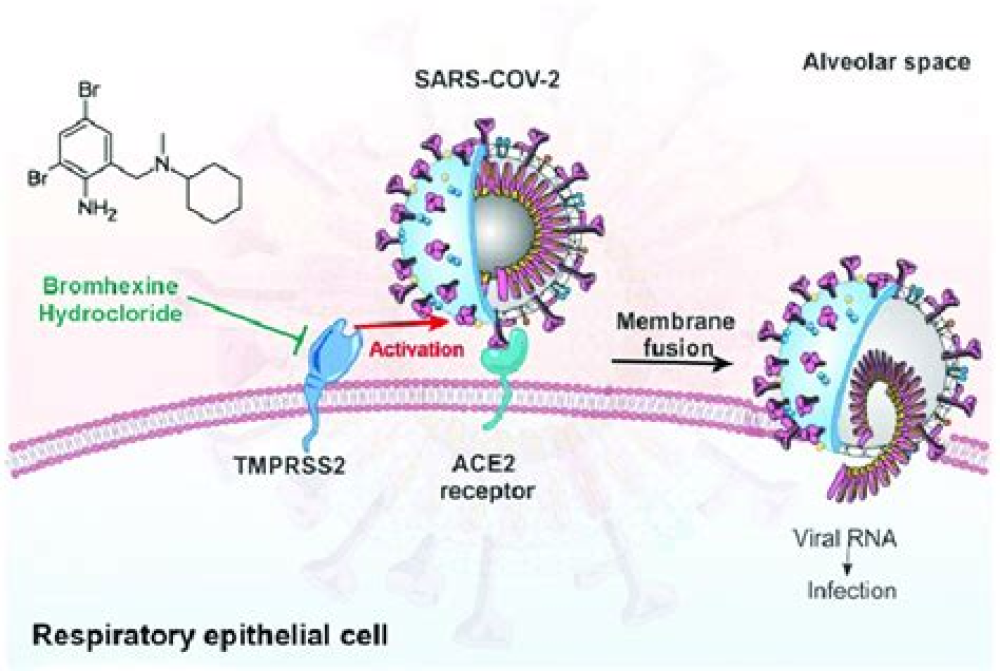Authors: Julien Brechbühl,Ana Catarina Lopes,Dean Wood,Sofiane Bouteiller,Aurélie de Vallière,Chantal Verdumo, and Marie-Christine Broillet
Abstract
COVID-19 pandemic has given rise to a collective scientific effort to study its viral causing agent SARS-CoV-2. Research is focusing in particular on its infection mechanisms and on the associated-disease symptoms. Interestingly, this environmental pathogen directly affects the human chemosensory systems leading to anosmia and ageusia. Evidence for the presence of the cellular entry sites of the virus, the ACE2/TMPRSS2 proteins, has been reported in non-chemosensory cells in the rodent’s nose and mouth, missing a direct correlation between the symptoms reported in patients and the observed direct viral infection in human sensory cells. Here, mapping the gene and protein expression of ACE2/TMPRSS2 in the mouse olfactory and gustatory cells, we precisely identify the virus target cells to be of basal and sensory origin and reveal the age-dependent appearance of viral entry-sites. Our results propose an alternative interpretation of the human viral-induced sensory symptoms and give investigative perspectives on animal models.
Introduction
The Corona Virus Disease 2019 (COVID-19) has federated worldwide scientific efforts for understanding the viral epidemiological mechanisms of the coronavirus 2 (SARS-CoV-2) that causes this severe acute respiratory syndrome. In humans, the viral syndrome is characterized by an increased mortality rate in aged and/or comorbidity patients associated with the upper respiratory infection symptoms, such as severe respiratory distress1–3. In addition to its major impact, COVID-19 is associated by its direct alteration of human olfaction and gustation, in absence of substantial nasal inflammation or coryzal signs, resulting to anosmia and ageusia in up to 77% of the patients4–7. While these sensory symptoms are well established and intensely affect everyday behaviors8,9, the precise related mechanisms remain elusive10.
The target cells of the virus share a molecular signature: the concomitant cellular expression of the angiotensin-converting enzyme 2 (ACE2) and of its facilitating transmembrane serine protease 2 (TMPRSS2), which plays a crucial role for the interaction of viral spike proteins with the host cell11–13. Paradoxically, these entry sites seem to be lacking in sensory cells14–18, while a direct SARS-CoV-2 contamination has been observed both in humans and rodents19,20, requesting further investigations to explain the sensory-associated symptoms21–24. Therefore, the characterization of the animal model is necessary prior to its use to understand the causality underling the viral-induced sensory symptoms.
The use of mice is indeed limited for epidemiological studies due to their absence of hands, which, with aerosols, are the foremost passages of interindividual viral transmission25, as well as their published lack of SARS-CoV-2 ACE2-spike protein affinity26,27. Nevertheless, the ease of production of genetically modified mice and their scientific availability, as well as their well-studied and specialized chemosensory systems28–30, make them a valuable ally for the development of potential prophylactic and protective treatments related to these sensory symptoms.
Thus, we aimed here at characterizing the potential viral entry sites across mouse sensory systems. We found SARS-CoV-2 entry cells to be of different origins depending on the sensory systems. In summary, the virus could target cells involved in tissue regulation such as the supporting cells of the olfactory receptor neurons and the regenerative basal cells but also, specifically, the chemosensory cells of both gustatory and olfactory systems. We finally revealed that the emergence of viral entry sites in sensory and basal cells only occurs with age, which could explain both, the observed COVID-19 long-lasting effects and the age-dependent sensory-symptomatology in human.
For More Information: https://www.ncbi.nlm.nih.gov/pmc/articles/PMC8282876/
